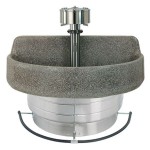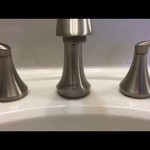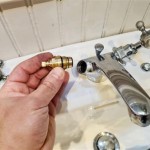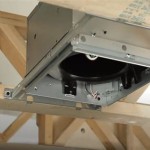Tiny White Worms in Bathroom Sink
Discovering small, white worms in the bathroom sink can be unsettling. While the sight might be alarming, understanding the potential causes and implementing appropriate solutions can quickly address the issue. This article will explore the common culprits behind these unwelcome guests and provide effective strategies for eradication and prevention.
Drain Fly Larvae
One of the most frequent explanations for small white worms in bathroom sinks is the presence of drain fly larvae. Drain flies, also known as moth flies or sewer flies, are small, fuzzy insects that thrive in moist, unsanitary environments. Their larvae are thin, legless, and typically off-white or light brown in color. They feed on organic matter accumulating within drains, such as soap scum, hair, and other debris. The presence of adult drain flies often indicates an infestation, as they lay their eggs in the same organic material the larvae consume. The life cycle from egg to adult can be as short as a week, leading to rapid population growth.
Other Possible Causes: Nematodes or Other Worms
While less common, other types of worms might occasionally find their way into bathroom sinks. Nematodes, for instance, are a diverse group of microscopic worms found in various environments, including soil and water. Some species of nematodes are free-living and may appear in sinks due to contamination from soil or plants. It is also possible, although less likely, that other types of worms might be inadvertently transported into the sink through various means. Accurate identification of the worm type is crucial for effective removal and prevention. Consulting with a pest control professional can help determine the specific species and recommend the appropriate course of action.
Effective Removal and Prevention Strategies
Addressing a drain fly larva infestation requires a multi-pronged approach focusing on eliminating both the larvae and adult flies. Cleaning the drain thoroughly is the first step. This can be achieved by using a drain brush to remove accumulated debris, followed by flushing the drain with hot water. Several natural and chemical solutions can effectively eliminate the larvae. Boiling water poured down the drain can kill the larvae and help dissolve organic matter. A mixture of baking soda and vinegar can also be effective, creating a fizzing action that dislodges debris and kills larvae. Commercial drain cleaners can be used for more stubborn infestations, but it's essential to follow the manufacturer's instructions carefully and ensure proper ventilation.
Environmental Control and Prevention
Preventing future infestations involves maintaining a clean and dry bathroom environment. Regularly cleaning the sink and drain with a disinfecting cleaner can help remove organic matter that attracts drain flies. Repairing any leaky pipes or faucets is also crucial, as excess moisture creates ideal breeding grounds for these insects. Ensuring proper ventilation in the bathroom by running the exhaust fan during and after showers can help reduce humidity and deter drain flies. Additionally, covering drains with strainers can prevent hair and other debris from entering the pipes and accumulating, minimizing the food source for drain fly larvae.
Professional Pest Control
If home remedies prove ineffective or the infestation persists, seeking professional pest control services is recommended. Experienced pest control professionals can accurately identify the source of the infestation and implement targeted treatment strategies. They can also provide valuable advice on preventing future infestations and maintaining a pest-free environment. In cases of severe infestations or when the worm type is uncertain, professional assistance ensures effective and safe eradication.
Identifying the Source
Tracing the source of the worms is crucial for long-term control. Consider inspecting other areas of the bathroom, such as showers, bathtubs, and toilets for signs of infestation. Checking nearby areas like kitchens or basements can also help determine if the issue is localized to the bathroom or a broader problem. Observing areas where pipes enter the bathroom may reveal potential entry points for worms. Identifying the source allows for targeted intervention and prevents the spread of the infestation to other areas of the home.
Maintaining Cleanliness in Other Areas
Maintaining overall cleanliness in the bathroom and surrounding areas plays a significant role in preventing infestations. Regularly wiping down surfaces, cleaning toilets and showers, and emptying trash cans can minimize the accumulation of organic matter that attracts pests. Properly storing cleaning supplies and personal hygiene products also contributes to a sanitary environment. By addressing potential breeding grounds throughout the bathroom, one can significantly reduce the likelihood of encountering these unwanted guests in the sink or elsewhere.

Semi Transpa White Worms In Bathroom Are Insect Larvae All About
How To Figure Out What The Tiny White Yellow Worms Crawling Around On Kitchen Floor Are Quora

Tiny White Things In Worm Bin Red Composting

Clear White Worms In Bathtub Are Ant Larvae All About

Maggots Roaming Bathroom Floor Could Be Clothes Moth Larvae Or House Fly All About Worms

How To Kill Bathroom Worms Ehow

Tiny Clear Worm In Sink Is A Flea Larva All About Worms

White Worms Near Sink Tiktok Search

How To Get Rid Of Drain Flies Rt Olson Plumbing

How To Get Rid Of Drain Flies Fantastic Pest Control
Related Posts







